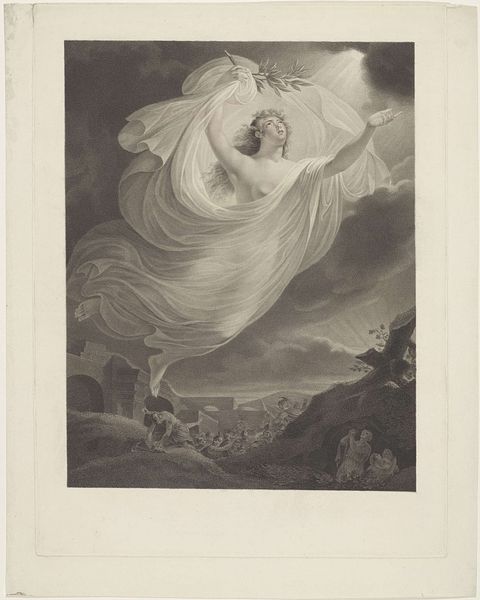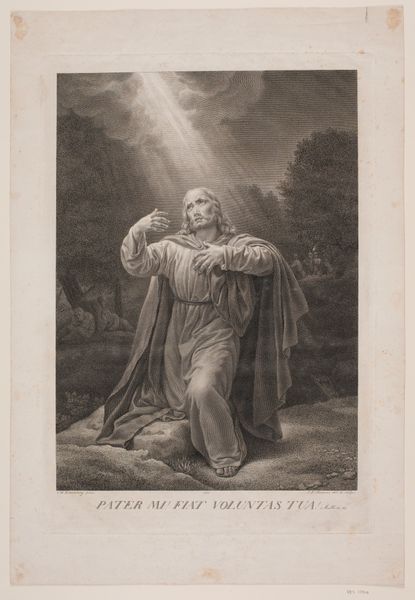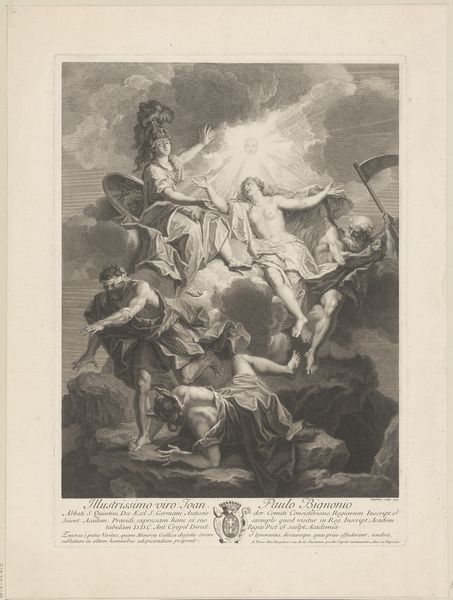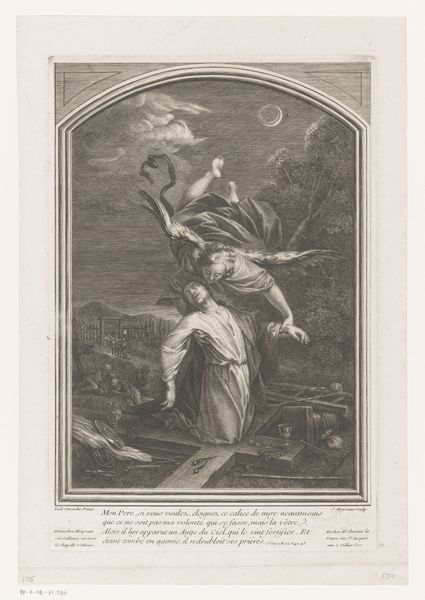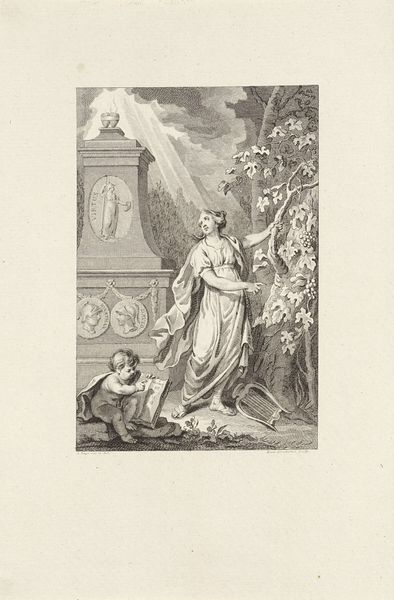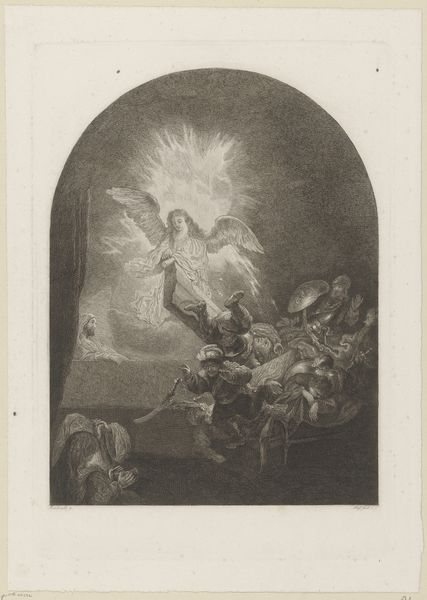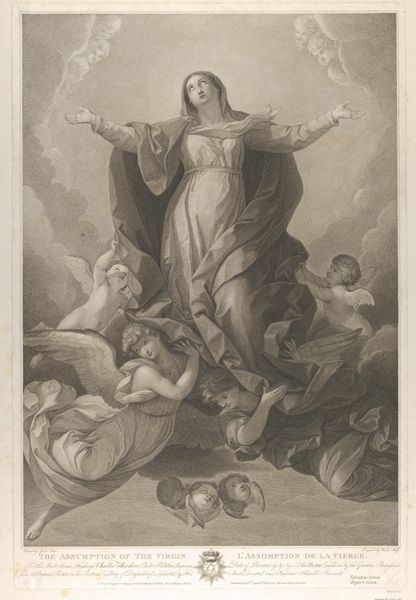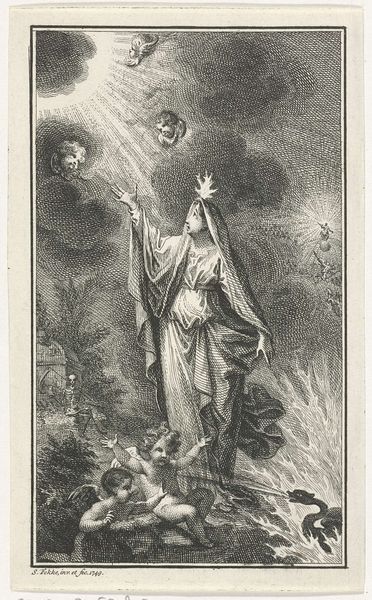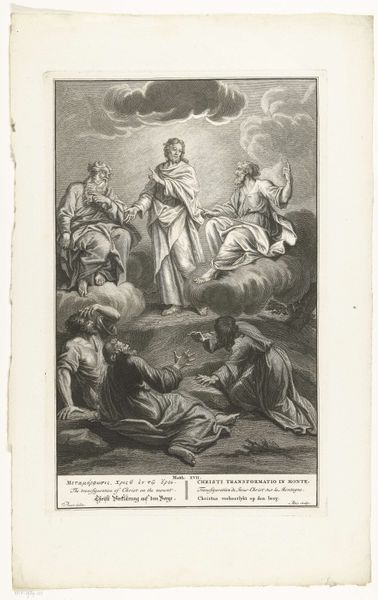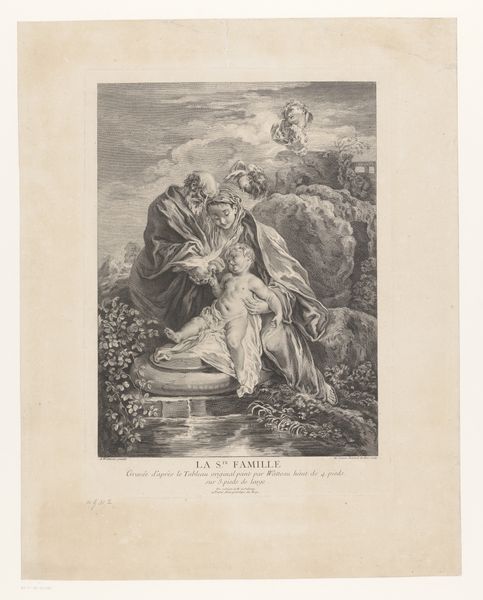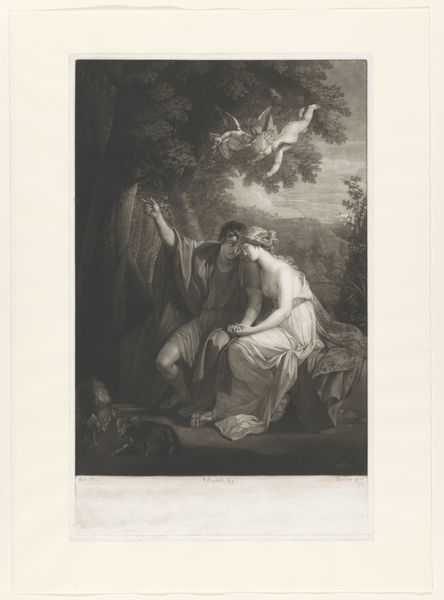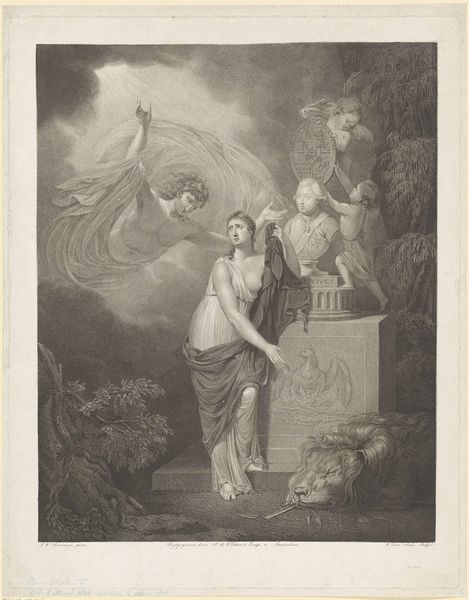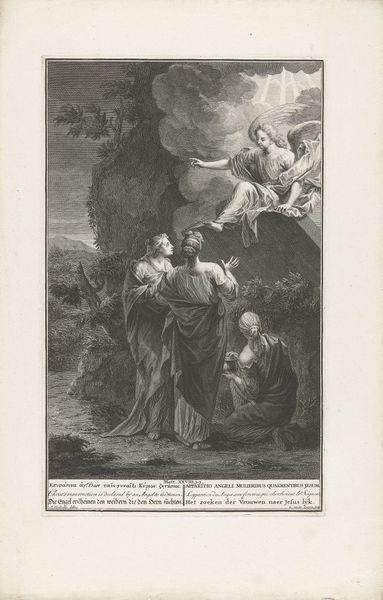
print, engraving
#
pencil drawn
#
light pencil work
#
allegory
# print
#
old engraving style
#
figuration
#
romanticism
#
line
#
history-painting
#
engraving
Dimensions: height 412 mm, width 275 mm
Copyright: Rijks Museum: Open Domain
Curator: The ethereal engraving before us is titled "Bezorgdheid van de overleden moeder," or "Sorrow of the Deceased Mother". Dating roughly from 1786 to 1843, it’s attributed to Benjamin Rodolphe Comte. It depicts a poignant scene rendered in light pencil work, showcasing the Romantic style through allegory and figuration. What is your initial reaction to this print? Editor: The stark contrast immediately grabs you—this dramatic play between light and shadow. The maternal figure seems to float, ascending almost, while the child lays isolated below. There’s an emotional weight that’s undeniably powerful, stemming from themes of mortality and grief. It suggests this eternal sorrow is inflicted by patriarchy, loss and motherhood as linked tragic fates. Curator: Exactly, Comte crafts a visual narrative deeply rooted in 18th and early 19th-century sentiments regarding motherhood and morality. Examining its place within the broader socio-political context, prints like this were accessible to a wide audience. Therefore they functioned as a powerful means of disseminating ideas about proper womanhood. The ideal womanhood that Comte portrayed involved selflessness and devotion. This would resonate in the social fabric. Editor: Agreed, the symbolism is overt. Light, traditionally associated with divine grace, bathes the mother, perhaps hinting at absolution. But it is worth noting that the mother ascends into heaven only by leaving behind a child, as if these conditions of love and support are unfulfilled, thus reinforcing and troubling normative power structures, specifically within the familial and gendered context. Curator: Furthermore, the stylistic use of lines is not merely decorative but reinforces this duality— the mother ascending vs. child deserted and vulnerable. We can interpret that the piece critiques these constraints, by underscoring an unnatural detachment enacted over this mother and child unit. Editor: Seeing how social norms around maternal duty intersected with the rise of Romanticism is insightful. Ultimately this print becomes more than just an aesthetic piece, It's a mirror reflecting anxieties about life, death, and the roles assigned to women in that historical moment. Curator: Precisely. Through its circulation, such imagery shaped public perception. They underscored ideals, while simultaneously stirring questions around agency. I think understanding these dynamics unlocks further meaning and context to appreciate such historical artworks. Editor: A haunting artwork that prompts introspection beyond its obvious symbolic cues. It underscores those complexities interwoven within domestic spheres and patriarchal systems which shaped expectations of mothers throughout centuries, making them ever the more important for current reflection.
Comments
No comments
Be the first to comment and join the conversation on the ultimate creative platform.
